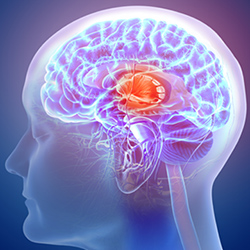
The symptoms of the COVID-19 range from non-existent to life threatening. Given how much each patient’s experience varies, it’s not surprising that recovery can also vary dramatically.
According to Dr. James A. Otis, a neurologist and associate professor of neurology at the University of Massachusetts Medical School-Baystate , “We’re still very much in the learning stages of understanding what recovery looks like. We know that the more severe the illness, the longer and more complicated the recovery can be. But we’re also coming to appreciate that not all the challenges associated with recovery are a direct result of COVID-19.”
What does recovery from COVID-19 look like?
As with almost all aspects of coronavirus, there’s still a lot of learning to be done about recovery. But, says Otis, for the majority of patients presenting with very few or no symptoms of the virus, recovery from COVID-19 looks much like recovery from any other virus.
“For those individuals, there’s the typical fatigue experienced whenever your body is fighting an infection. When you’re sick, you tend to not eat or drink as much as they normally would. That can leave you dehydrated, weak and cause headaches. But, for the most part, recovery for mild cases takes about a week or so.”
However, for people who experienced more serious symptoms that required hospitalization or even ventilation, recovery can look quite different.
“The average patient admitted for COVID-19 stays for 18 days. With that length of stay, you end up with a lot of factors contributing to how recovery unfolds. Eighteen days is a long time to be on bedrest. Plus, you’re not getting your usual nutrition or keeping your normal sleep patterns. For patients who end up in the ICU and require sedation or pulmonary support, they also have to contend with getting the medication out of their symptom. All those factors combined can definitely contribute to a longer recovery period.”
COVID-specific recovery symptoms
Among the most common COVID-specific symptoms Dr. Otis has seen during recovery are the continued loss of sense of smell and taste, and exercise intolerance.
“The loss of sense of smell and taste is by far the most difficult symptom to contend with,” says Otis. Of the COVID patients he has treated who have lost their senses, 50% remain without them six months into recovery. “That’s something I’ve never seen before. It’s unsettling to be without those senses and it steals a bit of the joy that we all experience from sharing a meal together or indulging in a favorite snack. Psychologically it’s not good. Fortunately, experience from other countries shows most recover. Olfactory retraining (relearning to smell) can help is some cases.”
Otis’ COVID patients have also complained of muscle aches and exercise intolerance. “Very often, patients are eager to get back to a fitness routine but find that they just can’t reclaim the endurance or strength necessary to maintain a regimen,” he says. “They often also complain of disrupted sleep which can definitely impact one’s energy levels.”
Non-specific recovery symptoms, non-specific causes
Otis also notes that it’s not uncommon for patients in recovery to complain of lightheadedness, forgetfulness, headaches and fatigue; often lasting for months.
“Patients with persistent symptoms of this nature— often dubbed ‘long haulers’ — present a bit of a challenge. It’s hard to know what’s driving those symptoms. Many of them may be related to stress. And without question, it’s a stressful time in the world. When you add recovery to the list of stress factors and signs of stress, it gets hard to tease out what’s behind the symptoms. That said, whatever they’re experiencing is real. Patients should always be aware of how they are feeling and to listen to their bodies. Healing is hard work. Be patient and let your body do its job.”
Learn More